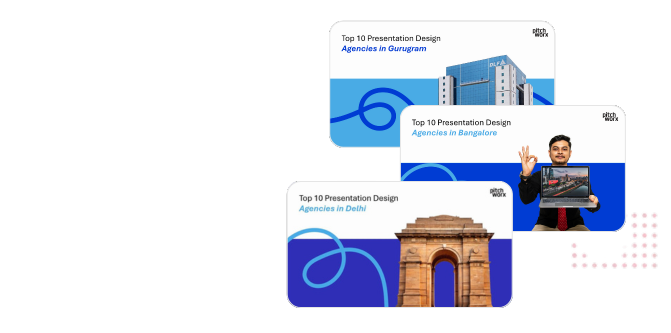Table of Contents
Quick Answer
To create a duotone effect in PowerPoint: Select your image → Go to Picture Format tab → Click Color → Choose Recolor options and select a two-tone preset (like Blue and Orange or any duotone combination). For custom duotone effects, use the Remove Background feature first, then apply two separate colored shapes behind and in front of the image with transparency adjustments.
Introduction
Visual appeal plays a crucial role in creating memorable presentations. Among the many design techniques available, the duotone effect stands out as a powerful tool for adding artistic flair and professional polish to your slides. This complete guide will walk you through everything you need to know about creating stunning duotone effects in PowerPoint, from basic applications to advanced customization techniques.
Whether you’re designing a corporate presentation, marketing pitch, or creative portfolio, mastering the duotone effect can significantly elevate your visual storytelling. This user-friendly guide focuses on practical, actionable steps that anyone can follow, regardless of their design experience.
What is a Duotone Effect?
Understanding the Concept
A duotone effect is a design technique that converts an image into two contrasting colors, typically by replacing the highlights with one color and the shadows with another. This creates a stylized, artistic look that:
- Simplifies visual complexity by reducing the color palette
- Creates mood and atmosphere through color psychology
- Enhances brand consistency by incorporating brand colors
- Draws attention to specific slide elements
- Adds a modern, professional aesthetic to presentations
Historical Context
Originally a printing technique from the 19th century, duotone gained popularity in graphic design for its ability to create striking images with limited color options. Today, it’s a staple in modern design, used by major brands like Spotify, which famously uses duotone effects in their marketing materials.
When to Use Duotone Effects
Best Applications:
- Cover slides and title pages
- Background images for text overlays
- Portfolio and case study presentations
- Brand-focused marketing decks
- Creative agency pitches
- Social media graphics created in PowerPoint
- Event posters and announcements
Avoid Using When:
- Product photography requires accurate colors
- Medical or technical presentations need precise details
- Charts and graphs contain critical color-coded information
- Images contain important small details that might be lost
Method 1: Using Built-In PowerPoint Recolor Options
Step-by-Step Process
Step 1: Insert Your Image
- Click “Insert” on the ribbon menu
- Select “Pictures” from your device or stock images
- Choose a high-contrast image for best results
- Place the image on your slide
Step 2: Access Picture Format Tools
- Click on the inserted image to select it
- The “Picture Format” tab will appear in the ribbon
- Locate this tab at the top of your screen
Step 3: Apply Color Effects
- In the Picture Format tab, find the “Color” button in the Adjust group
- Click the dropdown arrow next to “Color”
- Browse through the “Recolor” section
- Select any two-tone color combination preset
Step 4: Preview and Adjust
- Hover over different duotone presets to preview effects
- Click your preferred option to apply it
- The image will instantly transform into the selected duotone
Available Preset Combinations
PowerPoint offers several built-in duotone presets:
- Blue and Orange: Creates warm-cool contrast
- Purple and Teal: Modern and vibrant
- Gold and Gray: Elegant and sophisticated
- Red and Yellow: Bold and energetic
- Green and Blue: Natural and calming
Method 2: Creating Custom Duotone Effects
Advanced Technique for Unique Colors
Step 1: Prepare Your Image
- Insert your chosen image onto the slide
- Select the image and go to Picture Format
- Click “Remove Background” for cleaner results
- Refine the background removal if necessary
Step 2: Convert to Grayscale
- With image selected, click “Color” in Picture Format
- Choose “Saturation: 0%” to make it grayscale
- This creates your base for custom coloring
Step 3: Duplicate and Layer
- Right-click the grayscale image and select “Copy”
- Paste it exactly over the original (Ctrl+D for duplicate)
- You now have two identical grayscale images stacked
Step 4: Apply First Color (Shadows)
- Select the bottom image layer
- Go to Picture Format → Color
- Choose “More Variations” at the bottom
- Select your desired shadow color (typically darker)
- Adjust transparency to 40-60%
Step 5: Apply Second Color (Highlights)
- Select the top image layer
- Go to Format Picture (right-click option)
- Under “Picture Color,” adjust contrast to +40%
- Select “Recolor” and choose your highlight color (typically lighter)
- Set blend mode through transparency options
Step 6: Fine-Tune the Effect
- Adjust brightness and contrast for both layers
- Modify transparency levels for desired intensity
- Use Picture Format tools to sharpen or soften
Method 3: Using Shapes and Transparency
Alternative Approach for Maximum Control
Step 1: Image Preparation
- Insert your image and convert it to grayscale
- Increase contrast by +30 to +50%
- This enhances the duotone effect depth
Step 2: Create Color Overlay Shapes
- Insert a rectangle shape that covers the entire image
- Right-click the shape and choose “Format Shape”
- Set fill to your first chosen color
- Adjust transparency to 50-70%
Step 3: Add Second Color Layer
- Insert another rectangle over the first
- Apply your second color choice
- Set blend mode to “Multiply” or “Screen”
- Adjust transparency until desired effect achieved
Step 4: Group Elements
- Select all layers (image and shapes)
- Right-click and choose “Group”
- This keeps your duotone effect organized
Choosing the Right Color Combinations
Color Theory for Duotone Effects
Complementary Colors:
- Blue and Orange: Creates dynamic energy
- Purple and Yellow: Produces vibrant contrast
- Red and Green: Bold and attention-grabbing
Analogous Colors:
- Blue and Purple: Harmonious and sophisticated
- Orange and Red: Warm and inviting
- Green and Teal: Fresh and modern
Monochromatic Variations:
- Light Blue and Dark Blue: Professional and unified
- Pink and Burgundy: Elegant and refined
- Light Gray and Charcoal: Timeless and neutral
Brand Color Integration
Matching Your Brand:
- Use your primary brand color for highlights
- Apply complementary brand color for shadows
- Maintain brand consistency across all slides
- Test combinations with your logo visibility
- Ensure sufficient contrast for text readability
Practical Tips for Better Results
Image Selection Guidelines
Choose Photos With:
- High contrast between light and dark areas
- Clear subject definition
- Simple backgrounds
- Strong compositional elements
- Good resolution (minimum 1920×1080 for presentations)
Avoid Images With:
- Low contrast or flat lighting
- Multiple focal points
- Busy, detailed backgrounds
- Important color information
- Poor resolution or pixelation
Technical Optimization
Performance Considerations:
- Compress images before applying effects (Picture Format → Compress Pictures)
- Use “Remove Background” to reduce file size
- Limit the number of duotone images per slide
- Save frequently when working with multiple effects
- Export as PDF if sharing to preserve effects
Quality Maintenance:
- Start with high-resolution images
- Avoid excessive brightness/contrast adjustments
- Preview on different screens before presenting
- Test color visibility in projection settings
- Save original unedited versions
Creative Applications and Examples
Corporate Presentations
Professional Use Cases:
- Executive summary slides with subtle gray-blue duotone
- Team introduction pages using brand color combinations
- Section dividers with architectural photography
- Background images for testimonial slides
- Annual report cover designs
Marketing and Sales Decks
Engaging Applications:
- Product launch presentations with bold color schemes
- Customer success stories with emotional color choices
- Campaign overview slides with brand-consistent duotones
- Event promotion materials with high-energy combinations
- Social media strategy presentations
Creative Portfolios
Artistic Implementations:
- Portfolio cover slides with signature color schemes
- Project showcase pages with thematic duotones
- Before-and-after design comparisons
- Mood boards and concept presentations
- Agency capability decks
Common Mistakes to Avoid
Design Pitfalls
Overuse of Effects:
- Don’t apply duotone to every image in your presentation
- Limit to 2-3 key slides for maximum impact
- Balance treated images with standard photography
- Avoid competing duotone effects on the same slide
Poor Color Choices:
- Ensure sufficient contrast for visibility
- Avoid clashing color combinations
- Test readability with text overlays
- Consider color blindness accessibility
- Match colors to presentation tone and message
Technical Errors:
- Don’t forget to group layered effects
- Avoid low-resolution images
- Remember to compress final files
- Test animations with duotone images
- Preview on actual presentation equipment
About This Tutorial Series
This guide is part of PowerPoint Mastery 2025 – Complete Tutorial Series by PitchWorx, designed to transform your presentation skills from beginner to professional level.
Series Progress:
- Class 1: Image Compression Mastery
- Class 2: Perfect Object Alignment
- Class 3: Gradient Background Creation
- Class 4: Color Matching with Eyedropper Tool
- Class 5: Custom Template Creation
- Class 6: Advanced Animation Techniques
- Class 7: Create a Duotone Effect in PowerPoint (Current)
- Class 8: How to Add Hyperlinks in PowerPoint
Related Tutorials
Previous:
How To Mask Images with Shapes in PowerPoint – Class-5
Next: How to Add Hyperlinks in PowerPoint Class 8
Series: PowerPoint Mastery 2025 – Complete Tutorial Series
Frequently Asked Questions (FAQs)
Q1: Can I apply duotone effects to any type of image in PowerPoint?
A: Yes, you can apply duotone effects to any image format supported by PowerPoint, including JPEG, PNG, and GIF files. However, results work best with photographs that have good contrast and clear subjects. Images with complex details or critical color information (like product photos or charts) may not be suitable candidates. For optimal results, choose images with strong compositions, defined subjects, and high resolution.
Q2: Will duotone effects slow down my PowerPoint presentation?
A: Duotone effects themselves don’t significantly impact presentation performance. However, using multiple high-resolution images with effects can increase file size and potentially slow loading times. To maintain smooth performance, compress your images after applying effects (Picture Format → Compress Pictures → Email quality for presentations). Limit heavy effects to key slides and group all elements together to optimize rendering.
Q3: Can I save my custom duotone color combinations for future use?
A: While PowerPoint doesn’t allow saving custom duotone presets directly, you can create a template slide with your preferred duotone combinations. Keep a “master effects” slide with your standard duotone treatments, then copy and replace images as needed for new presentations. Alternatively, document your exact color codes (RGB or HEX values) and adjustment settings in a notes section for consistent reproduction.
Q4: How do I ensure text remains readable over duotone images?
A: To maintain text readability over duotone backgrounds, use these strategies: Add semi-transparent colored rectangles behind text (40-60% opacity); choose duotone color combinations that create sufficient contrast with your text color; apply blur effects to the duotone image to reduce detail competition; use bold or semi-bold fonts with good letterform clarity; ensure text size is at least 24pt for body content; and test visibility in actual presentation conditions before finalizing.
Q5: Can I create animated duotone effects in PowerPoint?
A: Yes, you can animate duotone effects using PowerPoint’s animation features. While you cannot animate the color transition itself, you can create interesting effects by animating the entrance of duotone images (fade, wipe, or zoom), applying motion paths to move duotone images across slides, using morph transitions to shift between different duotone versions of the same image, or animating individual layers if you’ve created custom duotone effects using multiple shapes. These animations work best when kept subtle and purposeful.
Q6: What’s the difference between duotone and black-and-white filters?
A: Duotone effects use two colors (highlights and shadows) to create artistic, stylized images, while black-and-white filters simply remove all color information, leaving only grayscale values. Duotone offers more creative flexibility, allowing you to incorporate brand colors, create mood through color psychology, and maintain visual interest while simplifying the image. Black-and-white is more neutral and documentary in nature, whereas duotone is inherently more stylized and design-forward.
Conclusion
Creating duotone effects in PowerPoint is an accessible yet powerful technique that can dramatically enhance your presentation design. Whether you’re using built-in presets for quick results or crafting custom color combinations for brand-specific applications, mastering this skill will set your presentations apart from standard templates.
Remember that effective duotone usage balances artistic impact with readability and message clarity. Start with simple applications on key slides, experiment with different color combinations, and always consider your audience and presentation context. With practice, you’ll develop an intuitive sense for when and how to apply duotone effects for maximum visual impact.
The key to success lies in thoughtful application rather than overuse, choosing appropriate images, and maintaining consistency with your overall design strategy. By following the methods and tips outlined in this guide, you’re well-equipped to create professional, eye-catching presentations that engage your audience and effectively communicate your message.












